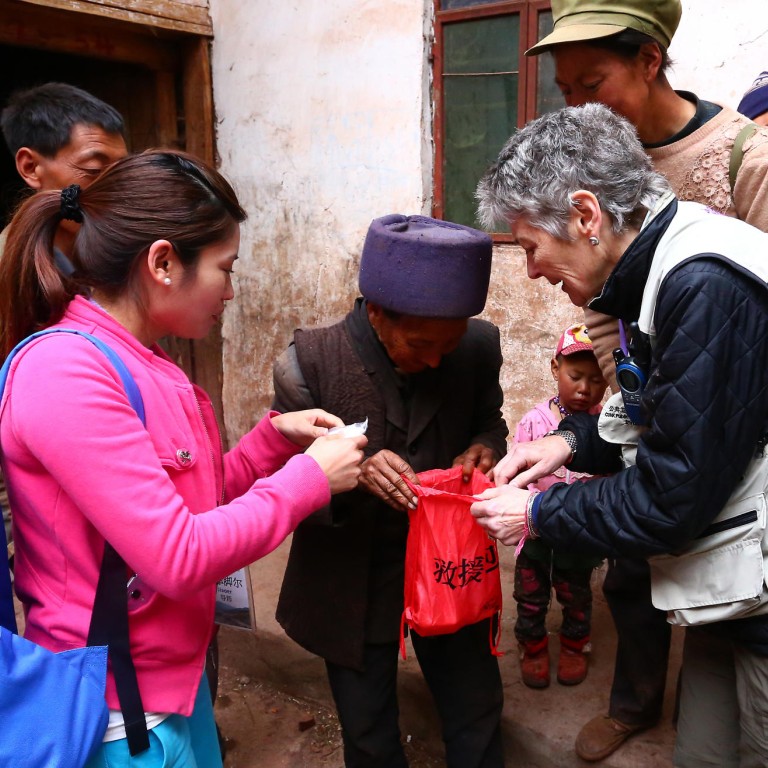
HK$40 disaster relief bag that makes the difference between life or death
Teaching survival skills to people in disaster-prone areas needn't be expensive, Chinese University's relief team is proving
Cheap and simple supplies like a whistle, sugar and salt or even a family photo could be the difference between life and death in the event of a flood, earthquake or other natural disaster.
That's the message a team from Chinese University's centre for disaster and medical humanitarian response is delivering to mainlanders living in rural areas prone to natural catastrophes.
As well as teaching simple skills that save lives, the academics and students give families a rescue and relief bag to grab should disaster strike.
The team has visited 21 villages in eight mainland provinces since 2009.
For a recent visit to the flood-prone village of Hongyan in Sichuan province, the team was joined by Professor Jennifer Leaning, an expert in disaster response from Harvard University's school of public health.
"We tell the villagers that it's not just a matter of fate. You can do something to save yourself and families," Leaning said.
The universities are working together to offer humanitarian response training in Hong Kong to medical professionals and others preparing to join relief efforts, including exercises which simulate the aftermath of a disaster.
Leaning has run similar exercises in the forests of New England, with trainees camping out, dealing with "victims" in the form of sticks with different markings to indicate the condition of the person involved, and actors launching raids or kidnappings.
Professor Emily Chan Ying-yang, director of the Chinese University centre, said similar training would be offered in Hong Kong next year.
Leaning says not enough emergency response training is offered in Asia, and Hong Kong has the capacity to fill the void.
The team returned from Hongyan on Tuesday.
They distributed emergency bags containing 11 simple pieces of equipment to more than 300 villagers, members of the Yi ethnic minority, and held workshops on using them.
The bags included whistles to be used to summon help, a lighter to start fires for boiling water and a blanket for warmth. The team also took family photographs to put into the bags - as these are more useful than describing a missing child.
Villagers were taught how to mix salt and sugar into drinking water to help prevent dehydration when suffering diarrhoea. The bags cost about 30 yuan (HK$38) to put together.
The team is monitoring the effectiveness of its work, hoping its efforts will lead to changes in government policy. "You don't need much money. It's mainly skills and organisation," Chan said.
